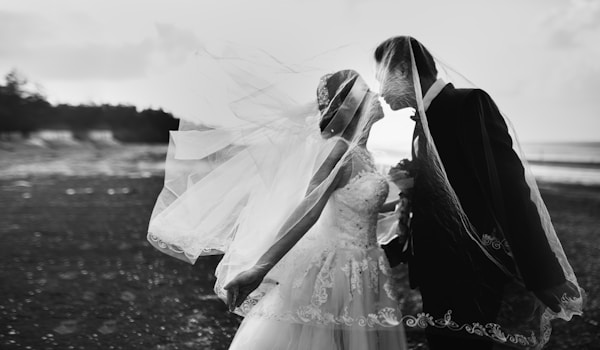Unveiling Elegance: Techniques for Creating a Wedding Dress with a Tailored Waist and Layered Skirt
When it comes to selecting the perfect wedding dress, the nuances of design can make all the difference. Among the various styles available, a wedding dress featuring a tailored waist and layered skirt holds a special place in the hearts of brides worldwide. But what techniques are used to create this stunning look? In this article, we will explore the intricate methods involved in fashioning such a dress, delving into the artistry and craftsmanship that define the bridal fashion industry.
Understanding the Elements of Design
A tailored waist and layered skirt are two significant features that can transform a wedding dress from ordinary to extraordinary. Each component contributes to the overall silhouette and aesthetic appeal of the gown.
The Tailored Waist
The tailored waist is a hallmark of sophistication, providing structure and definition to the dress. The following techniques are essential in achieving this feature:
1. Dart Manipulation
Darts are triangular folds sewn into the fabric to shape it around the body. By strategically placing darts in the bodice, designers can create a fitted appearance around the waist. This not only enhances the bride's silhouette but also ensures comfort and ease of movement.
2. Boning
Incorporating boning into the dress’s bodice can enhance durability and structure. Boning, typically made of plastic or steel, is sewn into the seams of the dress to provide support, especially in strapless designs. This technique helps maintain the tailored look while allowing the bride to move freely.
3. Waistbands and Belts
Adding a waistband or a decorative belt can draw attention to the waist, reinforcing the tailored appearance. Designers often use contrasting fabrics or embellishments to make the waistband stand out, creating a focal point that enhances the overall look of the gown.
| Techniques for a Tailored Waist | Description |
| Dart Manipulation | Shaping fabric with darts for a fitted silhouette. |
| Boning | Using plastic or steel to provide structure and support. |
| Waistbands and Belts | Emphasizing the waistline with decorative elements. |
The Layered Skirt
The layered skirt adds volume and drama to the wedding dress, creating a romantic and ethereal effect. Here are the critical techniques involved in layering:
1. Fabric Selection
The choice of fabrics is crucial when creating a layered skirt. Lightweight materials like tulle, chiffon, or organza lend themselves well to layering, allowing each layer to retain its shape while adding movement and flow.
2. Layering Techniques
Designers often employ various layering techniques, such as A-line, ball gown, or mermaid silhouettes. Each style influences how the layers cascade and interact with one another. For example, an A-line skirt gradually flares out from the waist, allowing for a softer look, while a ball gown creates a dramatic voluminous effect.
3. Hem Finishing
The finishing of the hem is vital for a polished appearance. Techniques such as rolling hems, bias binding, or even lace edging can add a touch of elegance to each layer, ensuring the skirt flows beautifully while avoiding fraying.
| Techniques for a Layered Skirt | Description |
| Fabric Selection | Choosing lightweight materials for better layering. |
| Layering Techniques | Employing specific silhouettes for desired volume. |
| Hem Finishing | Polishing the hem for a refined look. |
Combining the Elements
The beauty of a wedding dress with a tailored waist and layered skirt lies in the harmonious blend of these techniques. Successful designers often experiment with various combinations of these elements to achieve a unique and memorable gown. It's important to consider the bride’s individual style and body type, ensuring the dress flatters in all the right places while still being reflective of the personal aesthetic.
Inspiration from Iconic Designers
Many renowned designers specialize in crafting exceptional Wedding dresses. For instance, Vera Wang and Monique Lhuillier are celebrated for their innovative designs that frequently incorporate tailored waists and beautiful layered skirts. Brides looking for inspiration should explore collections from these designers to understand how these techniques are brought to life uniquely and fashionably.

Conclusion
Creating a wedding dress with a tailored waist and layered skirt is an art that requires skill, creativity, and an understanding of fashion techniques. From dart manipulation and boning to fabric selection and hem finishing, each aspect plays a vital role in crafting a gown that not only looks breathtaking but also fits impeccably. Brides should consider these elements when selecting or designing their ideal wedding dress, ensuring they embody elegance and grace on their special day.
As you embark on your journey toward finding your dream wedding dress, remember to consult with experienced designers and seamstresses who can offer personalized advice and services tailored to your unique vision. The right gown is more than just fabric; it's a symbol of love and celebration that will be cherished for years to come.
For those searching for related queries, consider looking into:
- How to choose the right fabric for your wedding dress?
- What styles of Wedding dresses flatter different body types?
- Which trends are popular in wedding dress designs this year?